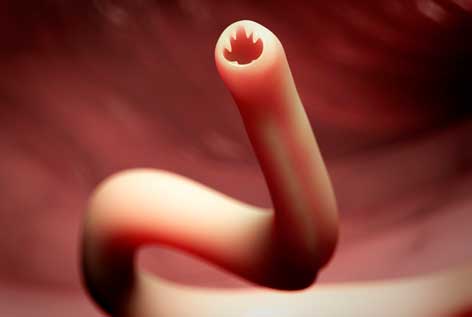There are numerous skin diseases known to men. Some of them are non-life threatening but can put the sufferer in a lot of emotional and psychological distress, especially the kinds that have no known cure or are difficult to hide from view. Such is the case with vitiligo, a dermatological condition wherein the skin loses its normal pigmentation.
A lot of women dream of having fairer skin to look more attractive. Vitiligo indeed makes the skin appear white, but certainly not in a flattering manner. That’s because the disease is marked by white patches appearing on the skin. Since these white patches mostly tend to appear on areas exposed to the sun, which means body parts that are normally not covered by clothes such as around the mouth or on the hands, vitiligo is a problem that can be hard to hide.
Many people are wondering if vitiligo can be caused by hookworms. Logging on the web to research proves to be not that helpful as the opinions seem greatly divided. In addition, a lot of vendors of antihelmintics (drugs formulated to expel worms and other parasitic organisms in the digestive tract) on the internet are quick to claim that hookworms are one of the leading causes of vitiligo. It’s easy to fall victim to the wrong pieces of information on the internet!
Don’t Get Hooked on Hookworms
It’s a good idea to know a little about hookworms first before knowing whether or not the presence of these parasites can in fact cause vitiligo. Being acquainted with the basics such as where they live in the human body, how they get there and what they are capable of doing once there can help a lot in understanding if hookworms are to blame for vitiligo.
According to the Centers for Disease Control and Prevention or CDC, hookworms are intestinal parasites in humans. It is in the small intestines where both larvae and adult hookworms live, causing an assortment of intestinal diseases. Hookworms are spread when eggs in the feces of infected persons hatch and develop into larvae that are capable of penetrating the skin. However, there is also a particular type of hookworm which may be transmitted through their ingestion.
The initial indicators of a hookworm infection include rash and itching of the skin area where hookworm larvae have entered. Someone with a light infection may encounter no sign and symptom. On the other hand, loss of appetite, weight loss, abdominal pain, diarrhea, fatigue and anemia are the signs and symptoms of a severe hookworm infection.
Go Know the Causes of Vitiligo
Scanning all the information on hookworms posted by the CDC on its website, it seems like there is no correlation between vitiligo and hookworm in adults. This does not mean, however, that it’s safe to assume that the skin disease cannot be linked to hookworms. To date, health authorities cannot say exactly what causes vitiligo. However, the pros suspect that it is hereditary in nature as well as an autoimmune disorder.
In order to suffer from vitiligo, experts say that one or more of the genes you have inherited should predispose you to having the disease. In other words, the condition tends to run in families. Vitiligo may also be caused by your own immune system attacking your own body. In this case, it is said that the immune system destroys the skin’s melanocytes — cells in the skin that produce melanin, a dark pigment.
Can vitiligo be also due to severe mental stress, skin injuries and hookworm infection just like what some sources on the internet say? The answer is a resounding yes. However, it’s very important to know that all of these things are merely precipitating factors of vitiligo and not predisposing factors.
Precipitating Factors vs Predisposing Factors
Precipitating factors mentioned above such as stress, trauma to the skin and the presence of hookworms in the intestinal tract won’t give you vitiligo if you are not predisposed to having the skin disease. Pecipitating factors merely trigger the disease and not directly cause it. On the other hand, you are likely to develop vitiligo if you have the predisposing factors in you (such as one or more of your genes) and they are triggered by certain precipitating factors (stress, skin injury, etc.).
Hookworm infection is regarded as a precipitating factor of vitiligo. If you have the skin disease’s predisposing factors in you, it’s likely for those white patches to show up on your skin upon getting a hookworm infection.













